Tiger’s Nest, Bhutan
Repost of the Day: Adding a bit of light to the darkness as we get through the pandemic together.
This series features travel photos from my archives, shared with you as we shelter in place.
June 21st, 2020
To all the dads out there, Happy Father’s Day!
Today we’re wrapping up our visit to Bhutan with a slow hike up to Tiger’s Nest. It’s a perfect day ~ sunshine, blue skies and a wide open trail. The narrative below is from my original post, with updated photos.
Thank you so much for reading my series about Bhutan. It’s been so fun for me to relive the trip and retrace my steps. And I only visited the western half of the country ~ there’s more to see and experience going east beyond the Phobjikha Valley.
Tomorrow we’re taking the magic carpet to the beach for a day or two of relaxation.
Until then,
Kelly
***
My final day in Bhutan featured a journey to the location most emblematic of this demure country — Taktshang Goemba, or Tiger’s Nest Monastery. Mention Bhutan in conversation and Tiger’s Nest is the image that comes to mind for most people. Its anomalous, cliff-side location distinguishes it among the world’s many monasteries and religious sites. A trip to Bhutan would be incomplete without seeing it, for the pride of this small nation reaches its heights and waves proudly with its prayer flags.
In the 8th century Guru Rinpoche, founder of Mahayana Buddhism, flew on the back of a tigress from Tibet to the cliff in Bhutan where Tiger’s Nest is located (hence the name). He slayed a demon and meditated in a cave for several months. Guru Rinpoche transformed into eight manifestations, or gurus, each with a specific purpose. Regarded as the second Buddha, Guru Rinpoche remains an important figure in Buddhism in Bhutan.
Many hundreds of years after Guru Rinpoche arrived in Bhutan, the 4th Druk Desi (civil administrator) Tenzin Rabgye became a key figure of the Drukpa (Bhutanese) state. Also known as Gyalse or “Prince” Tenzin Rabgye, he introduced Bhutan to the festival dances of Tshechu and its massive wall hangings called Thongdrol. Both remain important facets of today’s Bhutanese culture. Upon visiting the cliff-side cave where Guru Rinpoche had meditated in the 8th century, Gyalse Tenzin Rabgye declared that a monastery should be built in his honor. Thus, the creation of Tiger’s Nest in 1692.
We left the hotel at 7:00 a.m. and made a short drive through Paro, into the hills, to the base of the mountain. Horses and guides waited to carry passengers to the top, but we went by foot. Tiger’s Nest was visible at the start — like a brush stroke of white on a gray granite cliff, to the right of a small couloir.
The morning was pleasantly cool — perfect for hiking. The terrain felt like home, with pine trees and brush and a well-worn trail that moved quickly from a flat introduction to a steep first act. Within ten minutes I was removing layers in a familiar habit from countless days spent hiking in California and Colorado. Now living in Singapore, it was SO good to be back on a real mountain trail.
Switchbacks snaked left and right and gradually lifted us up the mountain where we paused for a photo and wondered if we were really getting any closer. We could see Tiger’s Nest again, this time high on the mountain in front of us as we passed a long line of prayer wheels on a flat stretch of dirt.
About one hour into the journey, we reached the halfway point marked by a quaint cafe with an outdoor terrace and a good vantage point of Tiger’s Nest. With little traffic on the trail, we kept going.
The trail went up and up again for another 45 minutes, finally flattening out along the side of the mountain. We had reached the highest point, now hiking straight ahead until we reached the mountain edge where the trail emerged from the trees revealing an eye-level view of Tiger’s Nest.
To the right and below, the trail dropped steeply and finished its delivery but the view of Paro, prayer flags and Tiger’s Nest across the gorge held me captive for several minutes. It was the view I had seen in so many photographs. Even standing in front of it with my own eyes I had to remind myself: I AM HERE. I AM AT TIGER’S NEST IN BHUTAN. Take it in. Look at the details. This is NOT a postcard. This is happening! And nothing is happening! It’s perfect — just sitting there for me to see, at this moment, in this life.
We followed the stone steps, descending along the mountainside as the trail zigged and zagged. Tiger’s Nest loomed above us across the gorge as countless strings of prayer flags shifted in a colorful dance around us. We crossed the footbridge at the deepest point of the gorge where a white ribbon of water rushed down the granite face from above. We started climbing up again as I turned to look at the trail behind us.
A final flight of stairs led through the entrance to Tiger’s Nest — double wood doors in a small stone wall with tin shed roofs. I was surprised that we would actually be able to enter the monastery, but that’s the rare beauty of a small country like this with the space and kindness to accommodate the curiosity of travelers like me. We arrived at the guard house where we were required to check our bags and cameras, leaving the interior journey to my description and your imagination.
As you would assume based on the unusual shape and location of Tiger’s Nest, its inner chambers are stacked and wedged into the mountain with connecting steps and staircases. We removed our shoes and entered the first room — an intimate cave that fit just a few people, with a low ceiling and a small Buddha statue. Warm, quiet, insulated. It is said that Guru Rinpoche meditated here for several months, and there is a gilded doorway (seldom opened) to another cave beyond.
Back outside, we climbed a ladder-like staircase to the next level. The second chamber was comparatively large, with bigger statues, a high ceiling and a trap door that revealed a cave connecting to the first chamber below. Mysterious, cold, cryptic. Each wall was painted and decorated with endless detail.
The third chamber was mid-sized and we were the only people inside. Familiar, approachable, positive. Kinga explained to us that if we had come to Tiger’s Nest to get a name for a child this is where it would happen.
“I want a name,” I said.
“You want a name?” Kinga replied, looking at me curiously.
“Yes, I’d like a name. Can I have a name?” What a once-in-a-lifetime opportunity to partake in a Bhutanese tradition! Clearly there was no better place in the world.
Surprised by my request, Kinga scurried out the door to find the monk who would possibly fulfill my request. Upon their return there was a brief bit of Bhutanese negotiation, then Kinga told me to make a wish — boy or girl. The monk reached for a small glass jar filled with dozens of rolled strips of paper. He removed the top and offered the open jar to me, from which I picked a piece of paper. He unrolled it and wrote it down. I now had a name — two names actually, as is the Bhutanese custom. The name I was given (which I’ve kept to myself) loosely translates to “Perfect Happiness” and yes, I was perfectly happy.
Our final destination was another mid-size chamber packed with statues, paintings, figurines, butter lamps, offerings and explosive color throughout. Grand, overwhelming, divine. A massive Buddha statue dominated the room, filled with natural light from a window on the south side. Again, I was astonished at merely being inside the monastery but viewing each chamber had been a personal experience that provoked a wide range of thoughts and feelings.
We stepped outside, put on our shoes and lingered at an overlook that faced the Paro Valley several thousand feet below… just the warm sun, cyan sky and pleasant breeze accompanied us in reverence.
We departed the monastery and meandered down the steps, across the gorge and back up the other side. I think I shot a hundred photos — zoomed in, zoomed out, horizontal, vertical, snap, snap, snap … you may never be here again. The remaining trip to the bottom was far less arduous, filled new memories of a very special place. We stopped for a quick lunch at the cafe (good vegetarian food) and then continued down the hill.
Back at the car we departed for the remaining two sites of our trip. We traveled a road leading up a hillside, past an archery competition, to another area of Paro. The National Museum overlooked the valley from a fantastic perch on the hill.
Damaged by an earthquake, the National Museum looks like it might collapse at any moment with large visible cracks and a portion of its wall reconstructed with unpainted stone. It has a circular shape like a conch shell with a wall several feet thick. The artifacts of the museum have been transferred to a more secure building across the driveway. The exhibits include an incredible room of Bhutanese masks, as well as tapestries, tools, weapons and clothing from the past several centuries.
Our final stop was a very old stupa in the Paro Valley — Kichu Lhakhang, built in the 7th century. It was modest and soft spoken, with a homier feel than its grander counterpart up the mountain. A couple of sleepy cats guarded the inner courtyard where a beautiful door led to the prayer hall. Its dark, worn interior breathed heavily with age and wisdom.
The exterior was perforated by a long line of prayer wheels and two kids kicked a ball as butter lamps flickered inside a small shed. It was a perfect scene to end the trip — life, peace, devotion and beauty in a country overflowing with the same.

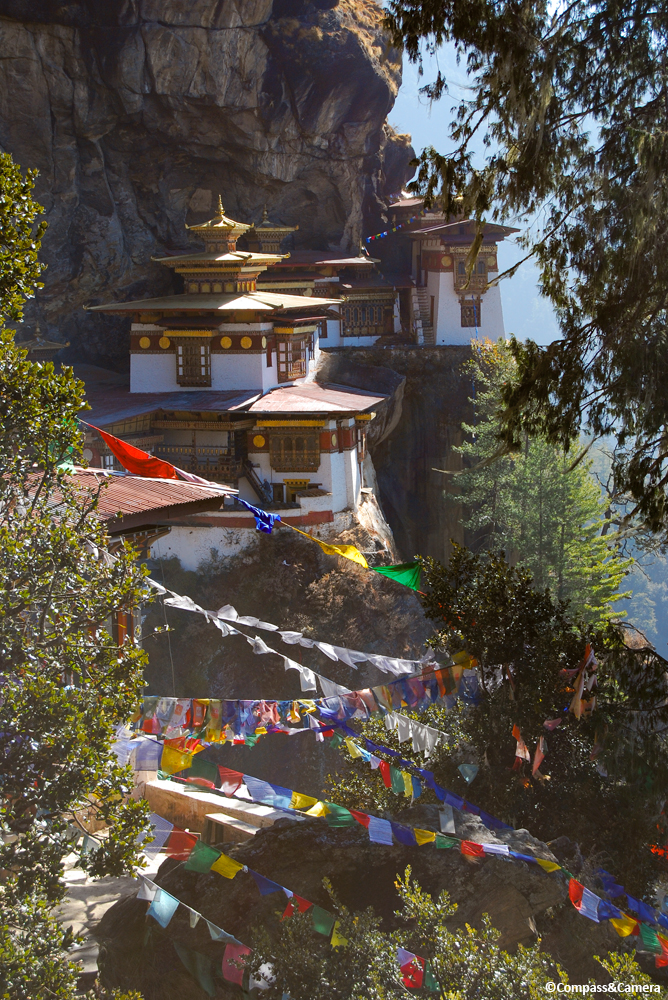







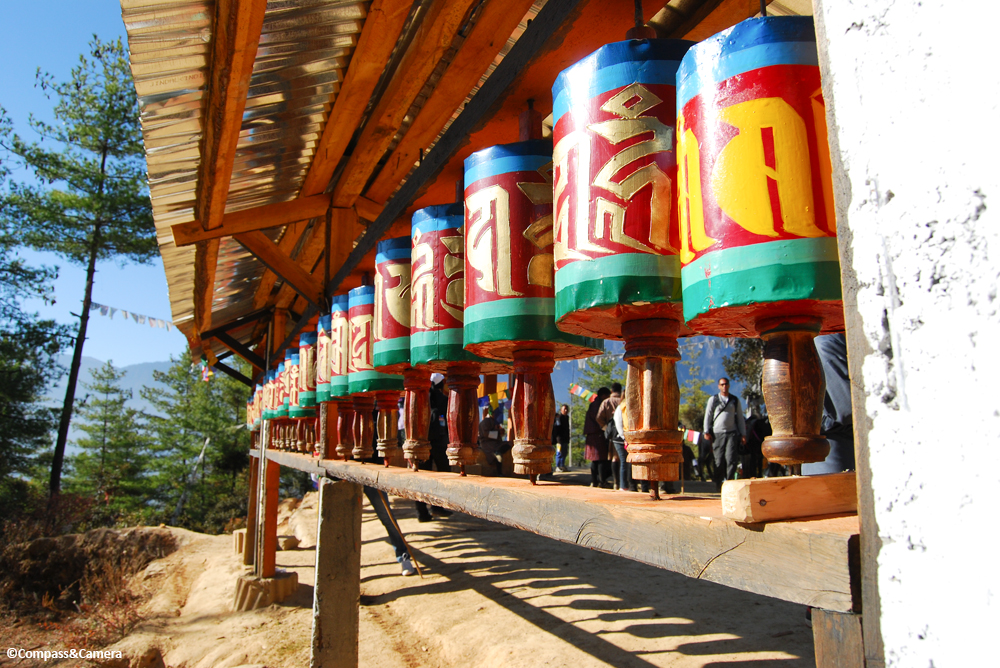
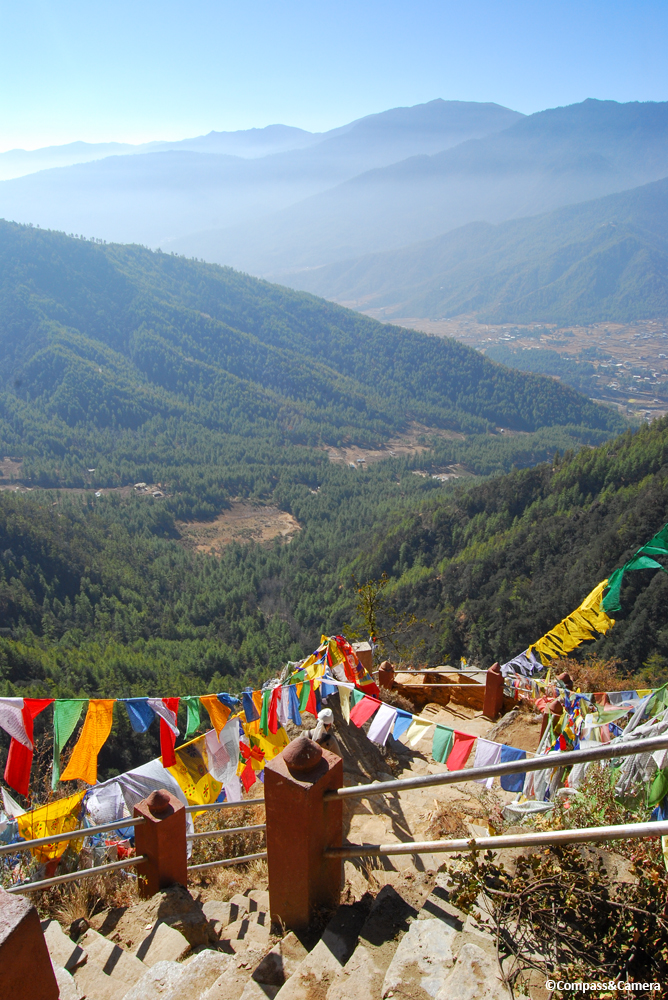
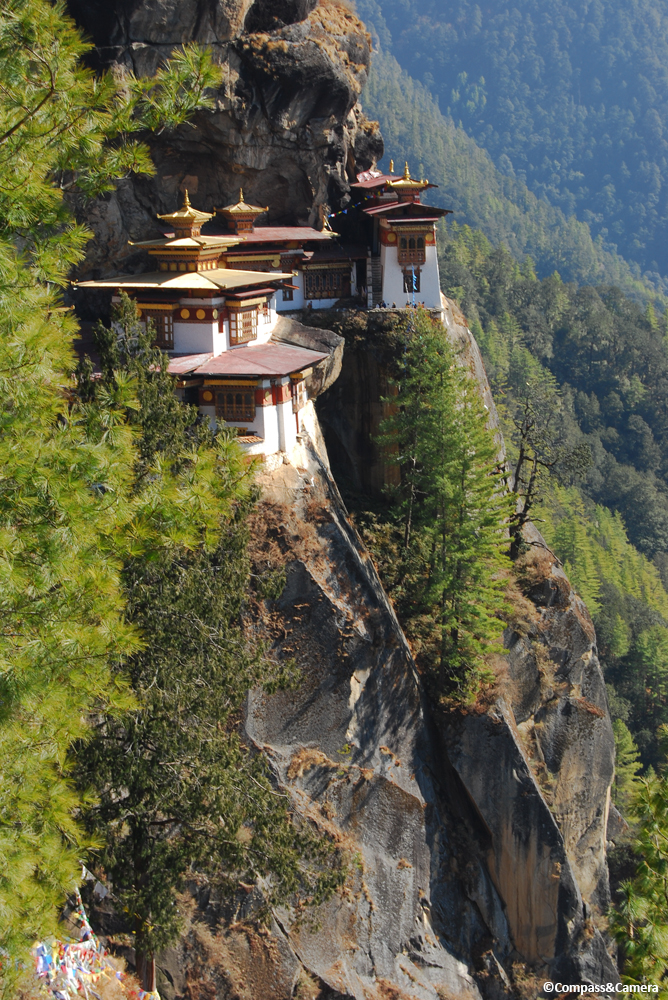
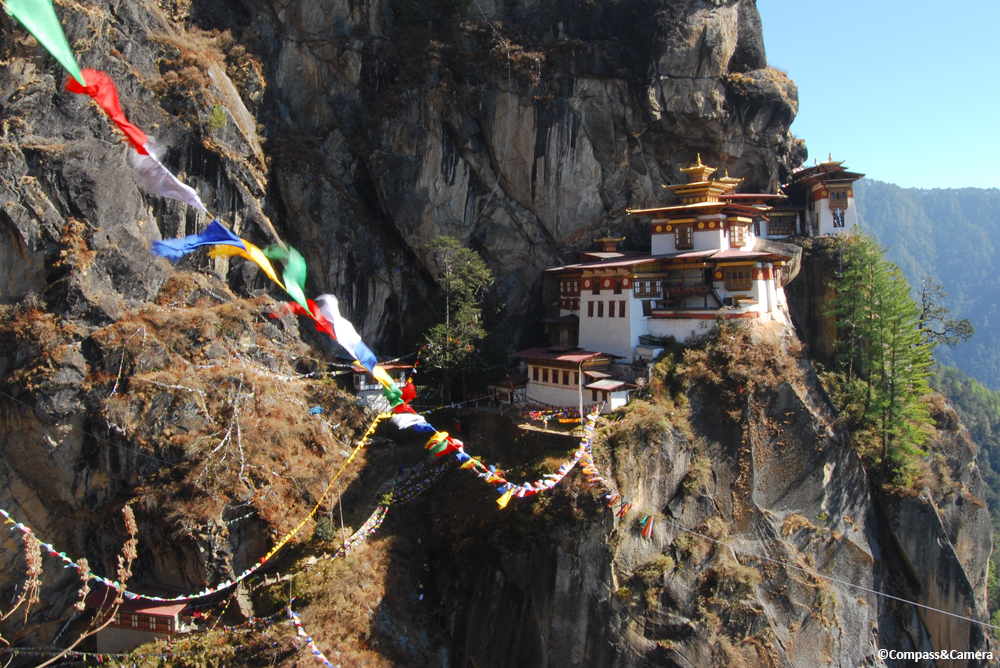
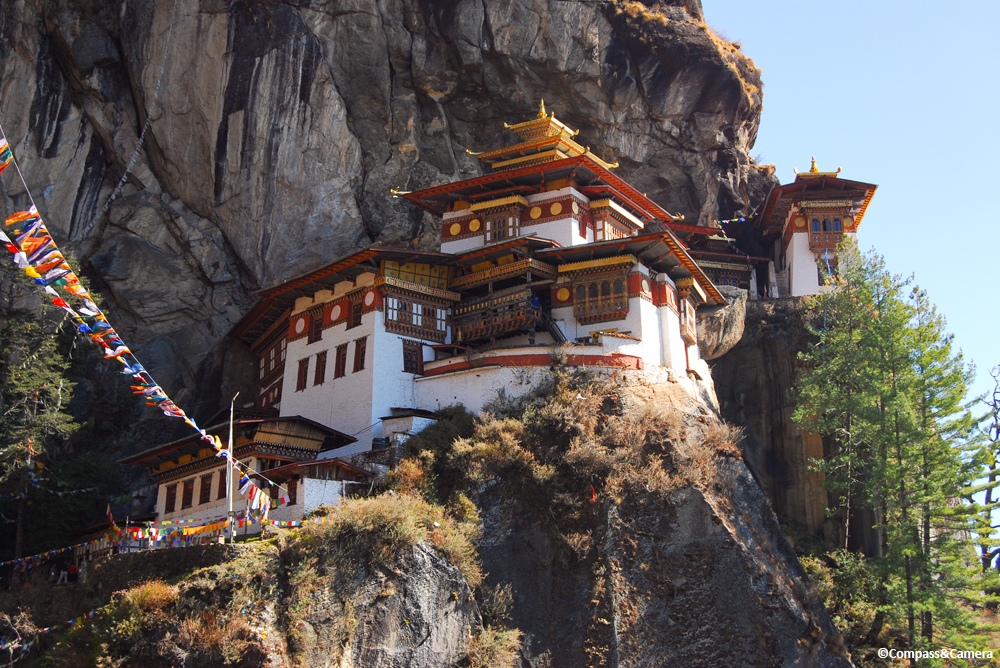

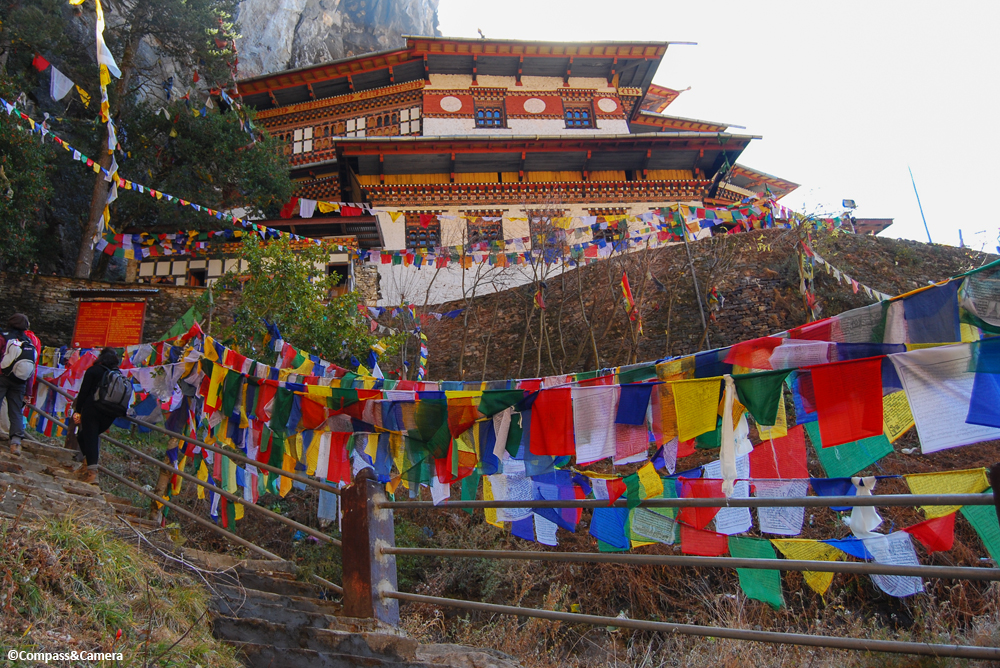
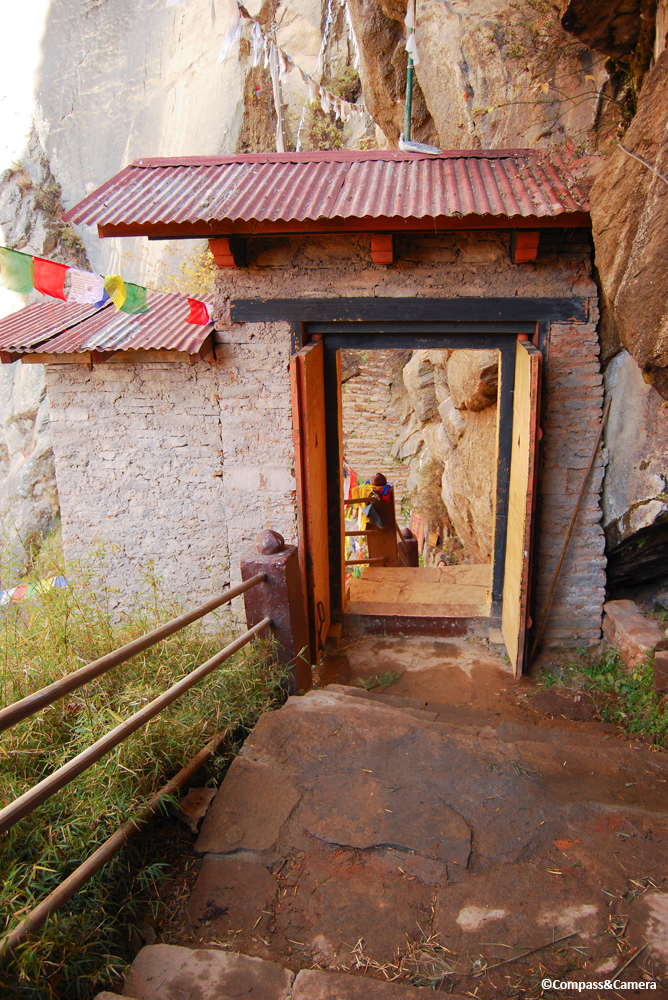
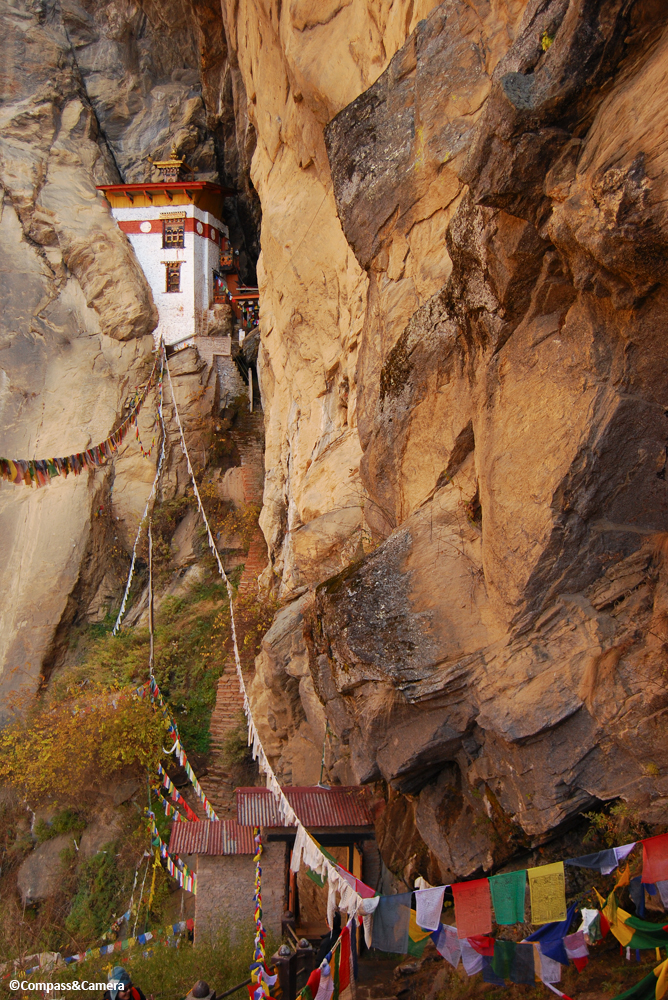

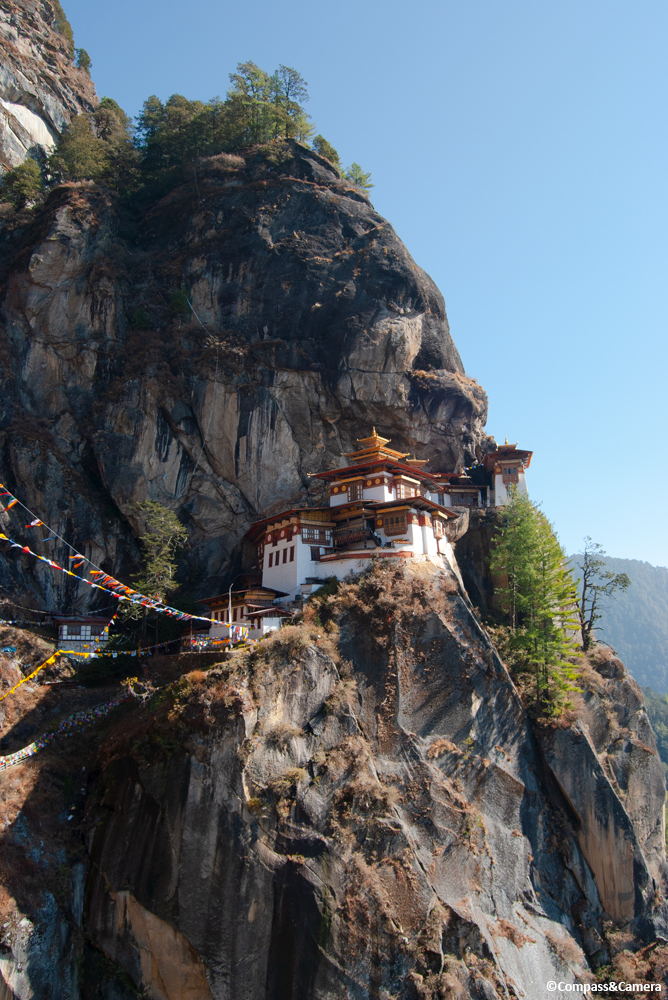
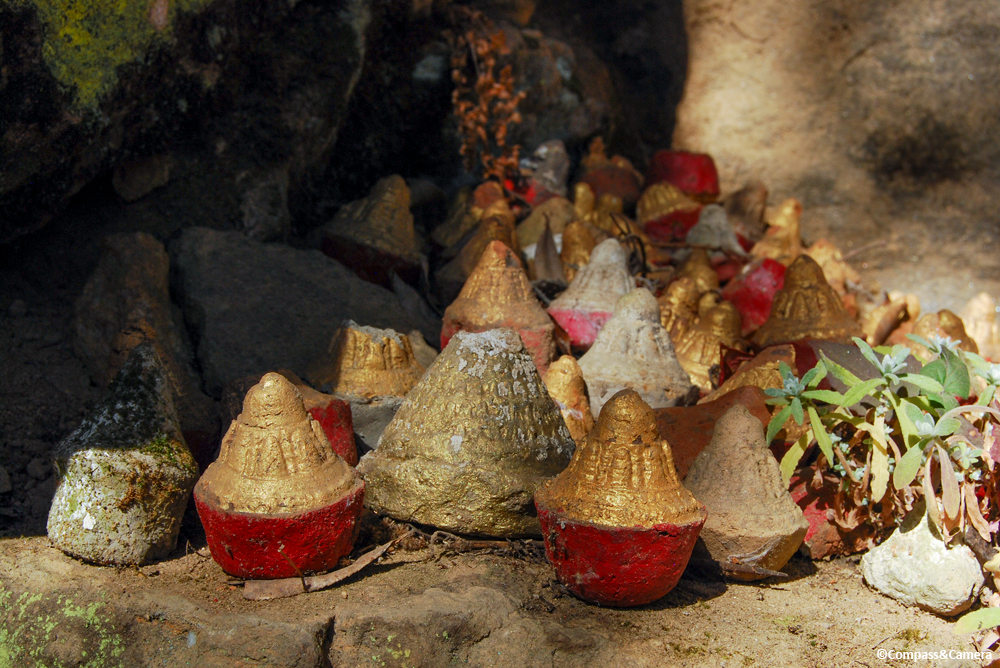
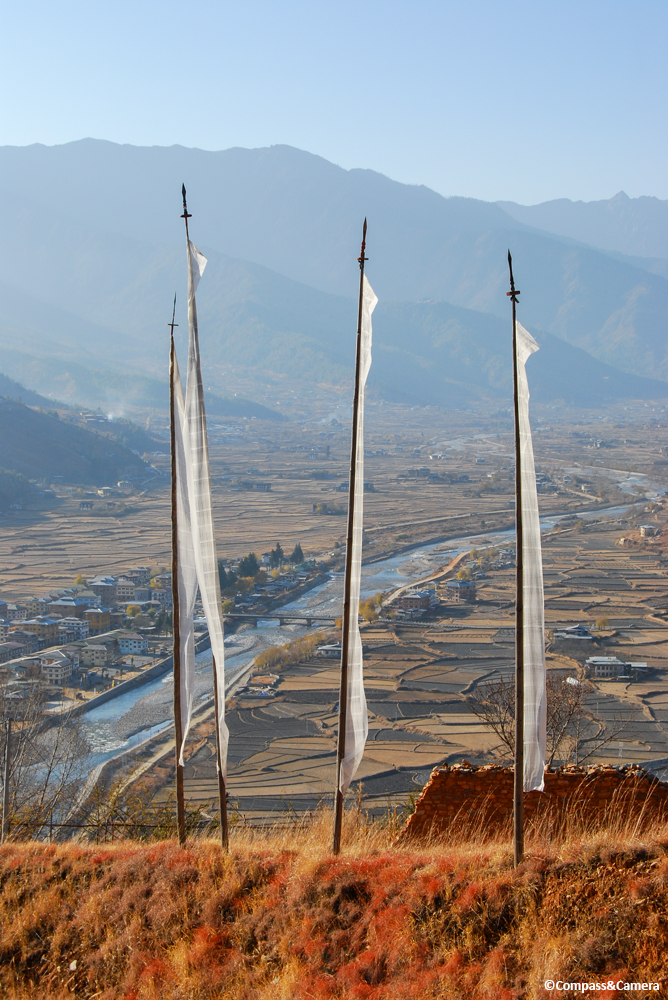


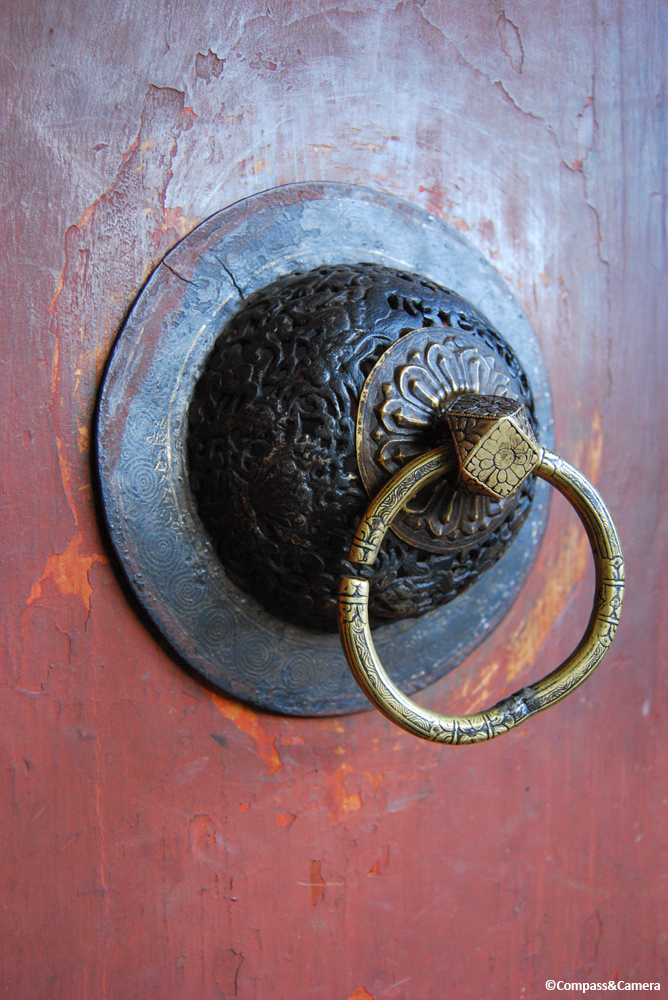

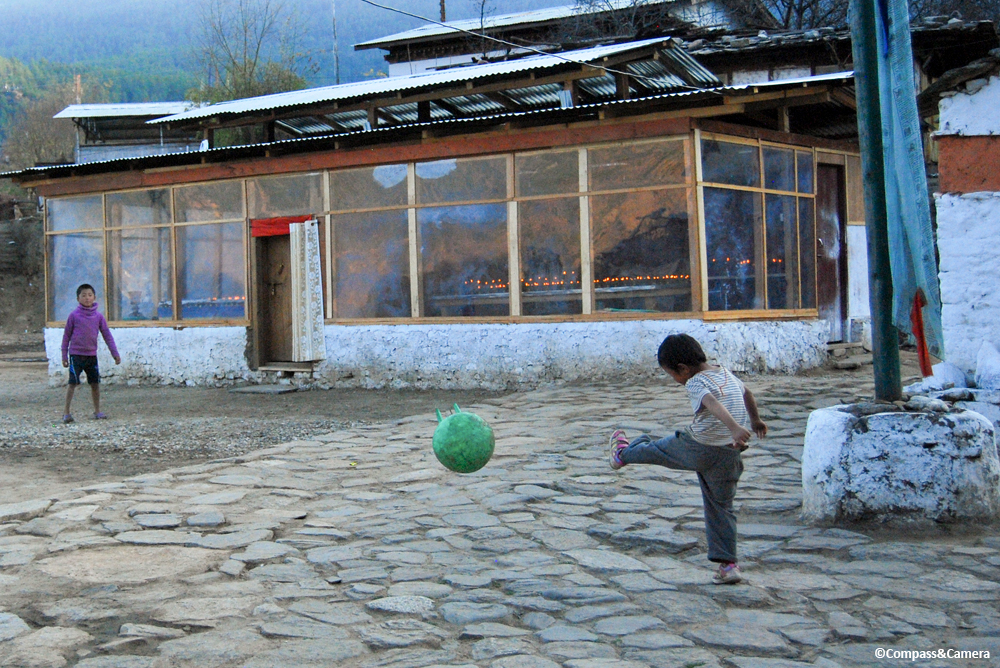
I try to imagine what could have motivated such an architectural prowess, is it the need for isolation or the desire to impress. It’s a chance to have been able to reach such a spectacular place. Thanks again for the long journey on the magic carpet.
LikeLike
Thank you, Lookoom. Happy to have you along for the journey! I think a lot about your point regarding motivation. This can be pondered about so many architectural sites around the world. I think these days one of the biggest elements we’re missing is time. People simply don’t want to spend the time learning/laboring over these trades or details any longer. It’s quite sad to see them dying out. Modern architecture can be remarkable but never matches the craftsmanship, skill, artistry by hand and beauty of a lasting treasure like Tiger’s Nest or other similarly unique architectural sites around the world.
LikeLike
And there is something intangible with beauty, at the time tourism did not exist, it was only a question of impressing the local population, and yet centuries later, travellers who have seen the best that the world has to offer, remain amazed by this sanctuary.
LikeLike
Beautiful post, Perfect Happiness. A lovely way for me to start my morning, reading this one!
LikeLike
Thank you so much, K! Hope your whole day was filled with happiness.
LikeLike
SO moved by this post, Kelly. Thanks for giving us this gift again.
LikeLike
Thanks, Mom! Happy to share it with you!
LikeLike
I love this post! What an amazing spot in the world! Thanks for the history of the place and the ties to Buddha. And for showing us in detail the architecture, height, etc. I have no idea how this could have been built and how it can even be maintained today, but it is. Also, I like the name selected for you — it’s ideal for how you were feeling at the moment and perhaps how you continue to feel about this place long after your travels are over. A really great post!
LikeLike
Thank you! It IS a wonder how Tiger’s Nest was built on that tiny ledge of stone. I keep thinking surely somewhere in the monastery is a written record of the process, with all the details of how it was done. Maybe someday we’ll finally know! Thanks for sharing your thoughts, Rusha!
LikeLiked by 1 person
You’re quite lucky to have seen this.
LikeLike
Perfect happiness and a perfect post!
LikeLike
Thank you, Pazeras!! 🙂 Great to have you along for the trip.
LikeLike
Thank you for sharing this wonderful journey with us all Kelly. Today’s post was memorable in so many ways but particularly for the colours, flags and your marvellous description of each treasured moment. Thanks also for your lovely Father’s Day good wishes. Looking forward to relaxing on the beach. Best wishes 🙂
LikeLiked by 1 person
Thank you, Andrew. Very happy to know you enjoyed the journey and even found inspiration to paint an amazing work of art. I am still awe-struck. Thanks again and cheers to the beach! 🙂
LikeLiked by 1 person
Pingback: “perfect happiness” | thechangingpalette
I remember silently wishing that when I went to Tiger’s Nest, the weather would be as glorious as when you did. It turned out to be a cloudy day, however. But the thick fog certainly gave this place and the mountains around it an undoubtedly serene and mysterious feeling, which I liked. Thanks for this walk/hike down memory lane, Kelly. This is truly one of the most magical places I’ve ever been to.
LikeLiked by 1 person
Travel is so funny in that way… you never know what the weather (among other things) has in store for you (like my awful day at Versailles). I lucked out with a sunny day here but I have no doubt your foggy, moody day here was beautiful, too. Thanks for reading along with this re-posted series ~ this time having been there! Cheers to that! 🙂
LikeLiked by 1 person
Pingback: Sunset in Goa – Compass & Camera
You saved the best for last! ❤️ 💙 🧡
LikeLike
Nice to relive Bhutan..again….its been months of lockdown ust after our roadtrip to bhutan.We drove from Bangalore ( India) to Bhutan till the highest motorable road leading into tigers nest ( base camp). Amazing paro and Amazing Bhutan.thnks for sharing. liked it. 🙂
LikeLike
Wow, Mathew, your road trip sounds amazing!! And long! 🙂 I hope you are doing well in India and staying healthy. Very happy to share Bhutan with you and relive it again! Thanks for your comment and for stopping by.
LikeLike
A fantastic read and the images bring your story to life!! Absolutely beautiful, thank you.
LikeLike
Thank you so much! I appreciate you stopping by and sharing your thoughts.
LikeLike
Your photos are just divine Kelly, and your words race me the feel of being there. What a special place.
Alison
LikeLike
What a beautiful post!
LikeLike
Thank you, Harry!
LikeLike
So beautiful, the country of Happiness!
LikeLike
Yes! 🙂 Thanks for your comment!
LikeLike
Incredible stuff!! The journey, the sites, the architecture. And, your writing of it does give us a sense of almost being there.
LikeLike
Ah, that’s the ultimate compliment Kevin. Thank you so much!
LikeLiked by 1 person
Wow. Talk about a perfect bucket list moment. (But then you seem to have a really large bucket…)
LikeLike
I love your sense of humor. I never thought about it but I guess I do have a large bucket! Or maybe several! 🙂 Thanks Dave.
LikeLiked by 1 person
Pingback: Sunset from Mount Popa, Myanmar – Compass & Camera
Worth reading!
Thanks for sharing your wonderful journey experience in the land of happiness.
LikeLike
Thanks so much for reading and sharing your thoughts! 🙂
LikeLike